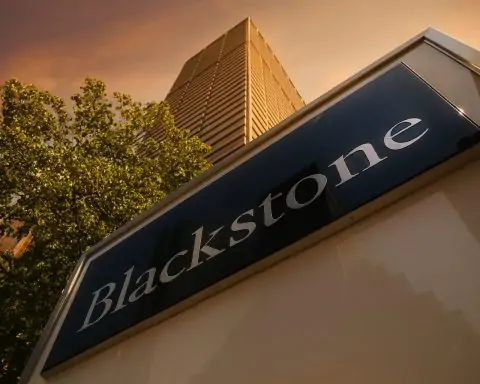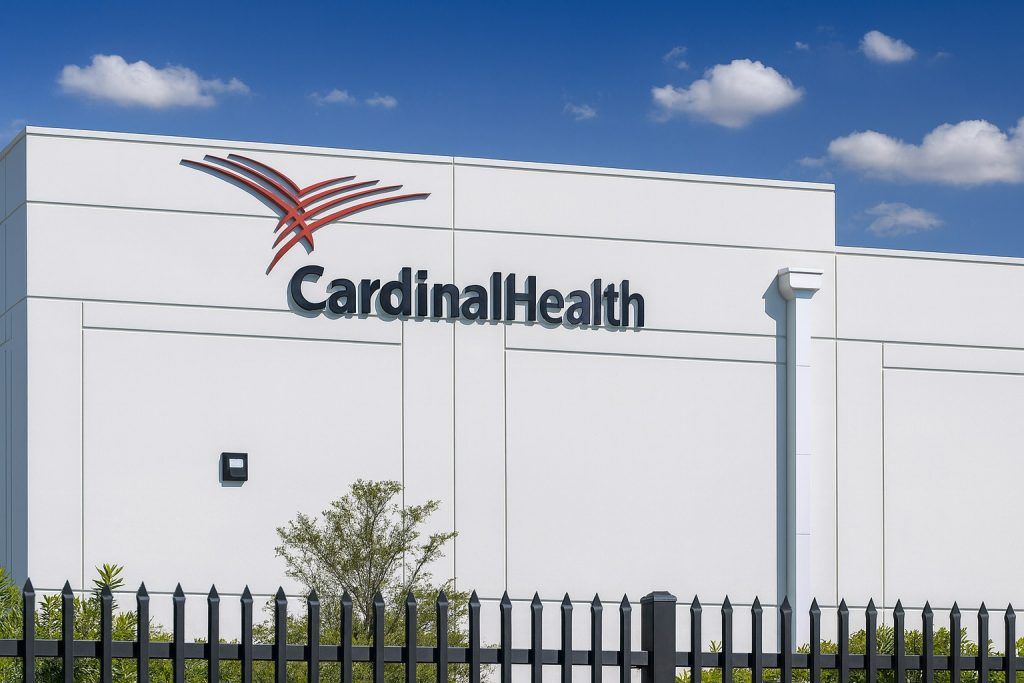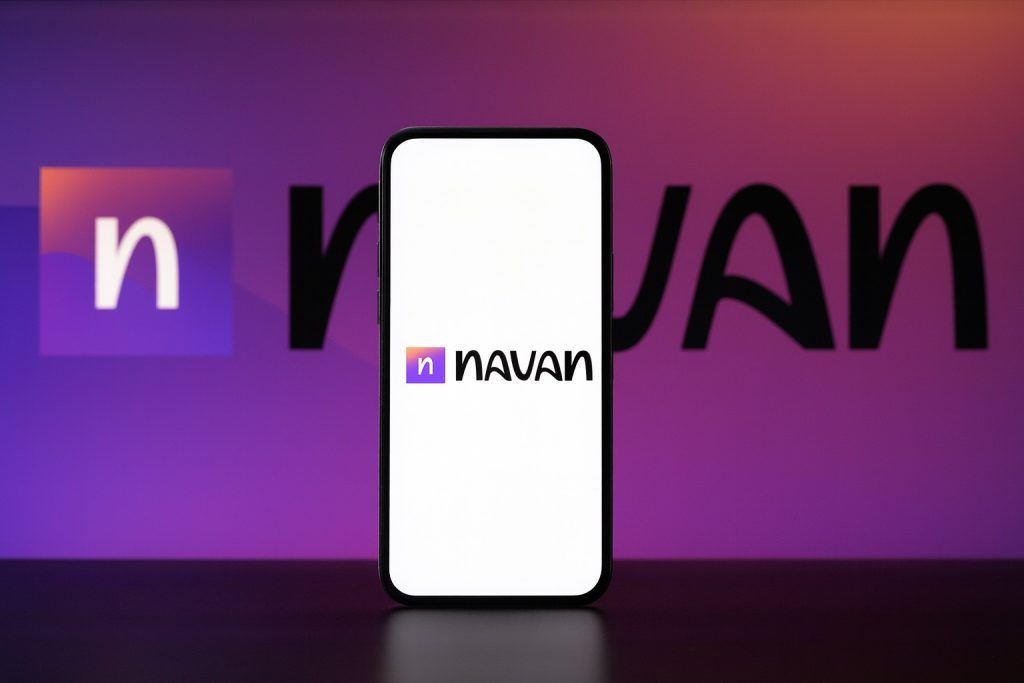- Wild October Rally: Vivakor’s penny stock has experienced explosive swings this month, spiking as much as 50–75% in a single day on funding news [1]. Shares jumped another ~20% around October 30, 2025 – surging to about $0.32 intraday – after the company unveiled its first major oil trading deal [2] [3].
- Big Oil Deal Secured: The Dallas-based energy firm closed a new $40 million credit facility to finance crude oil trading, providing letters of credit and guarantees so it can buy and move more crude [4] [5]. It also executed a $24 million Permian Basin crude transaction – the inaugural deal for its Vivakor Supply & Trading unit – leveraging its trucking fleet, storage tanks, and pipeline network to market oil [6] [7].
- Fresh Funding & Dilution: To fund growth, Vivakor raised ~$3.5 million via a direct stock and warrant offering with a single investor [8], and it inked term sheets for up to $23 million in new preferred equity to expand its oil marketing and remediation businesses [9]. Meanwhile, the company’s lender converted about $1.45 million of debt into equity, adding over 14.8 million shares to the float [10] – significantly diluting existing shareholders.
- Penny-Stock Risks: Even after recent pops, VIVK trades around $0.30–$0.40 per share – far below Nasdaq’s $1.00 minimum. The company has until March 2026 to regain compliance (via a sustained price recovery or reverse stock split) or risk delisting [11]. Vivakor remains high-risk: it lost over $22 million in 2024 (nearly double its 2023 loss) [12] and has repeatedly issued stock and convertible notes to stay afloat, dramatically expanding its share count [13].
- Bulls vs. Bears:Optimists argue that new financing will ignite a turnaround – one algorithmic model even projects VIVK could reach ~$0.76 by end-2025 (implying ~+159% upside) [14]. Skeptics, however, note the stock’s “negative” technical signals and 80%+ slide over the past year [15]. Management touts these deals as “transformational” for growth [16], but bears warn any rallies may prove fleeting without real profits, given Vivakor’s history of steep post-spike pullbacks [17].
Company Overview: Oil Logistics and Remediation at Vivakor
Vivakor, Inc. is a micro-cap energy infrastructure and environmental services company based in Dallas, Texas. The firm specializes in crude oil transportation, storage, and waste remediation. Its operations include a fleet of trucks for hauling crude oil and produced water, crude storage terminals, and even a proprietary pipeline (the Omega Gathering Pipeline) in major Texas oil regions [18]. Vivakor’s oilfield remediation facilities are designed to recover and recycle petroleum byproducts from contaminated soil and waste, aligning with a push for sustainable handling of oilfield waste [19].
In recent years, Vivakor has expanded aggressively – its revenue jumped to $89.8 million in 2024, up 51% from the prior year [20]. This growth came through asset acquisitions and scaling up its logistics network. However, profits remain elusive. The company posted a net loss of ~$23 million in 2024 (widening from a $10 million loss in 2023) [21], underscoring hefty operating costs and the challenges of turning its expansion into bottom-line gains. To fund its ventures, Vivakor has relied on external financing, ranging from issuing new shares to taking on debt – a strategy that, while bringing in cash, has led to significant shareholder dilution [22].
Latest News: Trading Platform Launch and Funding Moves
The latest catalyst arrived on October 30, 2025, when Vivakor announced the launch of full-scale trading operations in the Permian Basin. The company completed its first major commodity trade – a $24 million crude oil transaction – through its Vivakor Supply & Trading (VST) division [23]. This marks Vivakor’s formal entry into crude oil marketing, where it will act as a middleman buying crude from producers and selling to refiners or other buyers. The inaugural deal will utilize Vivakor’s existing infrastructure (trucking fleet, storage facilities, and pipeline injection points) to handle the oil’s transport and storage [24]. According to the company, VST’s role is to arrange logistics and sales for the oil, and Vivakor expects to earn roughly 1% of the contract’s value as its fee – about $240,000 on the $24 million trade [25]. While modest in margin, this is standard for crude trading arrangements and is seen as a proof of concept that Vivakor’s new trading platform is operational and generating revenue.
“The execution of Vivakor Supply & Trading’s first major $24 million crude oil transaction marks an important inflection point for our company,” said CEO James Ballengee in the announcement [26]. Management emphasized that as trading volumes ramp up under new long-term credit facilities, the VST platform could become a significant revenue driver. The goal is to integrate the trading business with Vivakor’s logistics assets – using its trucks, terminals, and pipeline to manage oil flows from purchase to sale [27] – thereby capturing more value across the supply chain.
This trading debut comes on the heels of several financial maneuvers in late October aimed at shoring up Vivakor’s liquidity and growth capital. On Oct. 23, 2025, Vivakor closed a $40 million commodity intermediation credit facility – essentially a one-year credit line from a wholesale partner to finance crude oil purchases for VST [28]. This facility, initially announced as a term sheet on Oct. 15, was finalized ahead of schedule and provides Vivakor’s trading arm with up to $40 million in letters of credit, surety bonds, and other financial instruments to back its oil trades [29] [30]. In practical terms, this means Vivakor can now acquire and move much larger volumes of oil without fronting the cash itself – the credit line covers the upfront cost of barrels, which Vivakor can then transport and resell. Company leaders have touted the deal as transformational: “The closing of this transaction… effectively launches Vivakor’s trading platform,” said CEO Ballengee, noting it had been “more than a year in the making” [31]. CFO Kimberly Hawley added that the $40M facility “significantly strengthens our liquidity position” and gives the flexibility to scale the trading and logistics operations efficiently [32]. The stock market reacted enthusiastically to the credit facility’s closure – as detailed below, Vivakor’s share price spiked on the news.
At the same time, Vivakor has been raising fresh equity to bolster its balance sheet. On Oct. 16, 2025, the company announced a registered direct offering that ultimately brought in approximately $3.5 million in gross proceeds [33]. In that deal, a single institutional investor agreed to purchase common shares and pre-funded warrants (warrants that are exercised almost like shares) at a price set “at-the-market” under Nasdaq rules. The offering, which closed by Oct. 17, was facilitated by D. Boral Capital as the placement agent [34]. While the cash infusion provides needed working capital, it came at a cost to existing shareholders: between the new shares and warrant shares, over 8.4 million new common shares (plus ~14.7 million warrant shares) were issued [35] [36] – expanding Vivakor’s share count by roughly 40% in one go [37].
Further financing is in the pipeline as well. Back on Sept. 29, 2025, Vivakor signed a term sheet to raise up to $23 million via a new series of convertible preferred stock [38]. That prospective deal, if finalized, would inject funds earmarked for two key growth areas: about $15 million to scale the crude oil trading/marketing segment and $5 million to expand Vivakor’s remediation services, with the remainder for general corporate needs [39]. Notably, the preferred-stock investor would also become an operational partner – the agreement includes exclusive trucking commitments that would utilize Vivakor’s fleet, indicating a strategic alignment in the logistics side of the business [40]. While this preferred equity funding had not closed as of late October, it represents another potential liquidity boost to fund Vivakor’s expansion plans.
In addition to raising cash, Vivakor has taken some unconventional steps to reward shareholders during this tumultuous period. The company declared a special dividend payable not in cash, but in shares of one of its private affiliates, Adapti, Inc.. After some delays, the dividend is scheduled to be distributed on October 31, 2025 [41]. For each Vivakor share, investors will receive about 0.0074 shares of Adapti [42] – a tiny fraction that equates to only a few cents of value per VIVK share (roughly $0.2–$0.5 million in total dividend value for the whole company) [43]. Analysts have noted this is a token gesture with “minimal tangible benefit” to shareholders [44]. However, it’s an interesting move by Vivakor’s management to provide some return (in the form of stock in an affiliate) despite the firm’s cash constraints. At the same time, Vivakor is navigating the requirements of being a Nasdaq-listed penny stock – in mid-September it secured a 180-day extension from Nasdaq to cure its share price deficiency [45]. By March 16, 2026, the stock must trade back above $1 for at least 10 consecutive sessions, or else Vivakor will likely need to execute a reverse stock split to artificially boost the price and maintain its listing [46]. Management has already indicated that a reverse split is on the table if necessary [47], though such moves often only provide temporary relief.
Finally, as part of its market outreach, Vivakor’s CEO James Ballengee was slated to present at the ThinkEquity Investor Conference in New York on Oct. 30, 2025 [48]. There, he planned to highlight the company’s recent $40M credit facility and other “company highlights” to institutional investors [49]. This suggests Vivakor is actively courting new investors and analyst attention in hopes of improving its market profile.
Stock Price: A Rollercoaster Ride on Heavy Volume
Vivakor’s stock (NASDAQ: VIVK) has been on a wild ride in recent weeks, with price action that can only be described as a rollercoaster. Going into late October, the shares were deep in penny-stock territory, languishing around $0.20 for much of the month [50]. But that changed dramatically when the company’s funding news hit. On October 15, 2025, Vivakor announced the $40M credit facility term sheet – and the stock exploded from around $0.19 to $0.37 intraday, a one-day leap of ~75% [51]. It closed that day around $0.28 (still up ~50% from the prior day) amid massive trading volume of roughly 230 million shares changing hands [52]. For context, VIVK’s typical daily volume before this was only a few million shares, so this represented an enormous spike in trading activity. The very next day, Oct. 16, the feeding frenzy continued in pre-market trading – VIVK stock opened as high as $0.48 and even briefly touched $0.60 in intraday trading [53]. However, those lofty levels didn’t hold; profit-taking set in quickly. By the close of Oct. 16, the stock had sunk back to roughly $0.29, essentially flat from the prior day [54]. The swing from $0.19 to $0.60 and back to $0.29 all within two days illustrates the extreme volatility at play. Early investors who chased the spike got burned as the stock gave back gains, a pattern familiar to seasoned penny-stock traders.
After that mid-October volatility, Vivakor’s shares drifted lower again, falling into the mid-$0.20s by the third week of October. But then, on October 23–24, news of the credit facility’s closing reignited the stock. VIVK had been about $0.25 on Oct. 22 [55]. On Oct. 23 it inched up to $0.26 by the close (+5.7%) [56], and early on Oct. 24 the stock skyrocketed once more – hitting around $0.37 in pre-market trading [57] after the company confirmed the $40M financing was finalized. Trading volume exploded again to an astonishing 436 million shares on Oct. 24 [58] as momentum players piled in. However, much like the prior spike, VIVK couldn’t sustain the peak. The stock oscillated wildly between $0.28 and $0.48 that day [59], and eventually closed Oct. 24 at ~$0.29 [60] – only a modest gain from earlier in the week, despite the intraday fireworks.
As October 30 arrived, Vivakor’s stock was once again on the upswing thanks to the trading platform news. By midday Oct. 30, VIVK was trading around $0.32, up roughly 24% from the prior day [61]. That put the share price near the higher end of its recent range (the stock had been hovering in the high-$0.20s in the days before). It’s worth noting that even at $0.32 per share, Vivakor is still down dramatically from its 52-week high – earlier in 2025 the stock briefly traded around $1.68–$1.73 at its peak [62] [63]. In fact, VIVK has been in a persistent decline for most of the year, plunging from over $1 last winter to under $0.20 by early fall [64]. The recent rallies, while eye-popping in percentage terms, have only clawed back a small portion of that long-term drop. As one analyst put it, “the chart is broken” on this stock [65].
Volatility and speculation remain the defining features of VIVK’s trading. The stock’s beta (volatility relative to the market) is extremely high – intraday swings of 20–30% (or more) have become routine on news days. These wild swings underscore that Vivakor is still very much a speculative micro-cap play. It can double in a day on a hot press release and just as quickly crash back down when traders cash out. The huge volumes on rally days suggest a lot of fast-money players trading the stock rather than long-term investors. Bulls might argue that increasing volume and price are signs of renewed interest, while bears see a classic pump-and-dump dynamic in play. For now, headline developments and momentum trading are driving VIVK more than fundamentals, making it a dramatic but risky ticker to watch.
Fundamentals: Cash Infusions vs. Ongoing Losses
From a fundamental standpoint, Vivakor’s story is one of growth ambitions tempered by financial strain. On the positive side, the company has aggressively pursued opportunities to broaden its revenue base – expanding its midstream logistics footprint and now venturing into crude oil trading. The flurry of new funding agreements in recent weeks indicates that Vivakor is actively securing the resources to support this expansion. The $40 million credit facility is particularly noteworthy: it doesn’t directly put cash on Vivakor’s balance sheet, but it greatly increases the company’s purchasing power in oil markets [66]. Essentially, Vivakor can now buy far more crude oil inventory on credit, enabling larger trade volumes through its VST unit. If those trades are managed wisely, the credit line could translate into significantly higher revenues and gross profits (since Vivakor can flip more barrels of oil for a modest per-barrel margin). In effect, the $40M facility serves as a catalyst to scale up Vivakor’s core business without needing $40M in cash upfront – a big deal for a company whose entire market cap is only around $30 million [67].
Beyond the credit line, Vivakor’s management has shown it can tap capital markets, albeit at a cost. The October direct offering that brought in $3.5–$5.0 million (there were slightly varying figures reported [68] [69]) provided a much-needed cash injection to fund operations. However, it significantly diluted shareholders, increasing the outstanding share count by over 20% in one stroke [70]. Likewise, the pending $23 million preferred stock deal could be a double-edged sword: if completed, it would supply major growth capital (likely dwarfing Vivakor’s current market value), but it will also come with strings attached – probably yielding a new large stakeholder and adding pressure in the form of preferred dividends or conversion rights. It’s notable that the preferred deal also includes operational partnerships (exclusive trucking agreements) [71], suggesting the investor might be strategically involved, not just a passive financier. This could benefit Vivakor by aligning incentives (the investor would help drive business to Vivakor’s logistics network), but the flipside is that it could further complicate the capital structure.
Despite these influxes of capital, Vivakor’s financial health remains precarious. The company’s own financial filings reveal a pattern of ongoing net losses and negative cash flow. In 2024, Vivakor posted a net loss of approximately $22–23 million [72], which was nearly double its ~$11 million loss in 2023. That widening loss came even as revenue surged (thanks to acquisitions or expansion) to nearly $90 million [73]. The fact that losses grew as revenue grew suggests that Vivakor’s new operations have high costs or that integration inefficiencies are eating into margins. Gross profit was only about $10 million on that $89.8 million revenue [74], indicating slim margins in the core business of oil transport and services. With overhead and other expenses, the company remains far from breakeven.
To cover these losses and fuel growth, Vivakor has repeatedly turned to external financing. In addition to equity offerings, the company has issued convertible promissory notes and even had to enter a forbearance agreement with a lender this year [75]. Notably, in early October, Vivakor’s primary lender J.J. Astor & Co. agreed to convert a substantial portion of its loan to equity – over $1.45 million of debt was converted into roughly 14.8 million shares across three conversion notices [76]. This relieved some debt pressure, but again at the cost of significant dilution (those converted shares represent over 10% of the post-offering share count). Every new batch of shares or warrants means existing shareholders own a smaller slice of the company. As one commentator observed, Vivakor has “dramatically expanded the share count” through these financings [77], which can weigh on the stock price since more shares are now chasing the same earnings (or, presently, the same losses).
The balance sheet expansion is another noteworthy point. Vivakor’s total assets ballooned to over $240 million by the end of 2024 [78] [79], from around $76 million in 2022 – a reflection of acquisitions (like new terminals or pipeline assets) and investments into its operations. However, total liabilities also grew, and the company carried $75+ million in debt as of 2024 [80] [81]. With ongoing losses, servicing that debt and meeting working capital needs depends on continued access to financing or a sharp turnaround in profitability.
On the shareholder equity front, Nasdaq compliance is a looming concern. Vivakor’s stock price has been under $1 for most of 2023–2025, triggering Nasdaq’s minimum bid price rule. The exchange gave Vivakor an extension to March 2026 to regain compliance [82]. If the share price does not naturally climb back above $1, Vivakor will likely resort to a reverse stock split (for example, combining every 5 or 10 shares into 1 share) to artificially raise the per-share price. Management has openly discussed this possibility [83]. While a reverse split could keep the stock listed, it won’t fix the underlying issues – and often, as bears point out, stocks that undergo reverse splits tend to drift lower again afterward [84], since the fundamental value hasn’t changed (and sometimes liquidity worsens with fewer shares outstanding).
In summary, Vivakor’s fundamentals present a mixed picture: the company is assembling the financial tools (credit lines, equity capital, partnerships) to pursue an ambitious growth strategy in the oil logistics and trading arena. However, it is doing so from a position of financial weakness – heavy losses, reliance on outside funding, and a stock that’s trading in pennies. The next few quarters will be critical to see if the new capital can translate into tangible improvements: higher revenues, improved profit margins, and a path toward breakeven. Absent those, Vivakor may continue to tread water financially and depend on dilution to stay in business, which is a perilous long-term strategy.
Technical Analysis and Market Sentiment
From a technical analysis perspective, Vivakor’s stock still has many red flags despite the recent bounce. Chart watchers note that VIVK remains in a long-term downtrend – the series of lower highs and lower lows over the past year has not yet been broken. Even after jumping off its October lows, the stock’s 50-day and 200-day moving averages (key trend indicators) are likely still sloping downward (given how far the price has fallen from early 2025 levels). One market research site, StockInvest.us, gave VIVK a distinctly bearish technical evaluation. It warned that Vivakor “holds several negative signals and is within a very wide and falling trend,” ultimately assigning the stock a “negative” rating even after the October rally [85]. In plain terms, the recent upticks haven’t yet signaled a true trend reversal – the stock would need to rise much further (and hold those gains) to break out of the entrenched downtrend channel.
Momentum indicators have been all over the map due to the volatility. In mid-October, VIVK’s relative strength index (RSI) likely spiked into overbought territory during the frenzied run-up, then whipsawed back. Such extreme swings can trigger technical selling or buying from algorithmic traders. As of end of October, the RSI and other oscillators might be less meaningful given the stock’s erratic jumps. Support and resistance levels are also tricky to pinpoint – the stock seems to find some support around the mid-$0.20s (where it traded in early October), whereas any approach toward $0.50 has brought heavy selling. The huge volume on spikes suggests many traders are using those rallies as opportunities to sell or short the stock, keeping a lid on sustained upside.
Another factor weighing on technical sentiment is the looming reverse split risk. Often, when traders know a company might enact a reverse stock split, they become hesitant to buy in the interim, since reverse splits can create short-term chaos in the stock (and as mentioned, frequently precede further declines). The knowledge that Nasdaq has a clock ticking on VIVK (March 2026) and that the stock is still only ~$0.30 creates an overhang. Either the stock roughly quadruples organically (to get above $1) – which would likely require very positive news or results – or a reverse split is coming within about five months. Neither scenario is certain at this point, which adds to investor uncertainty.
Market sentiment around Vivakor also reflects its high-risk, high-reward profile. The stock has become a bit of a magnet for speculative buzz on days when big news hits. It may appear on “top gainer” lists or see increased mention on social media when it has those double-digit percentage moves. However, it’s not a widely followed stock by mainstream analysts – no major Wall Street firms are publishing research on VIVK, as far as public info shows. Thus, the sentiment is driven largely by retail traders and small-cap focused investors. That kind of crowd can be fickle: quick to jump in on a hot headline and just as quick to jump ship at the first hint of trouble.
It’s also instructive to consider the broader market context: Vivakor operates in the oil & gas sector, which can influence sentiment. Recently, crude oil prices have been softening – U.S. benchmark oil prices are down roughly 5% over the past month [86]. Generally, falling oil prices can be a headwind for energy stocks, especially smaller ones, because they often signal lower revenues or thinner margins ahead. If oil were to enter a deeper downturn, investors might become more pessimistic on any company tied to oil, Vivakor included. That said, given Vivakor’s micro-cap status, its stock often trades more on company-specific catalysts than on macro trends [87]. We saw this in October: regardless of oil price fluctuations, Vivakor’s stock moved sharply on its own news (funding deals, etc.). In the short term, headlines about Vivakor’s projects, financings, or other corporate events will likely outweigh the macro environment. But in the long run, the company’s success will still depend on healthy operations in the oil sector – and that includes commodity prices not collapsing.
Overall, the technical picture for VIVK remains cautious. The stock’s recent volatility might entice day traders, but longer-term oriented investors will want to see evidence of a sustained uptrend or at least stabilization. For now, caution is warranted: as one analysis noted, VIVK has a “very wide and falling” price trend and a track record of destroying shareholder value (down over 80% in the past year) [88]. Such a history means any technical rally faces skepticism. Until proven otherwise, any spike could be followed by a steep fall – a pattern bulls hope to break, but one that bears believe will continue [89].
Outlook: Bulls vs. Bears on Vivakor’s Future
The dramatic events of October have led to a split in opinions about what’s next for Vivakor. Bullish observers see a company positioning itself for a turnaround, while bearish analysts remain doubtful that these moves will overcome deeper challenges. Here’s a look at both sides:
The Bull Case: Vivakor’s supporters argue that the company is now at an inflection point. They point out that management has aggressively gone into “growth mode, not retreat” [90], assembling a war chest of capital and credit to expand operations. CEO James Ballengee and his team have repeatedly emphasized the “synergies” that these new deals will create across Vivakor’s divisions [91]. By securing the $40M credit line and other funding, Vivakor can substantially scale up its crude oil trading and logistics throughput. Bulls expect that as early as the next couple of quarters, we could see a jump in revenue as Vivakor uses its credit facility to purchase and sell more oil. If oil prices hold reasonably firm, these higher volumes could translate into improved gross profits and maybe even a step toward positive EBITDA. The new capital also enables Vivakor to upgrade its operations (e.g. deploying AI with the Neuralix partnership for efficiency [92], hiring experienced executives, etc.), which could improve execution.
Some optimists even predict a strong recovery in the stock. Indeed, at least one predictive model, StockScan.io, forecasts that VIVK might average around $0.76 by the end of 2025 [93] – well more than double the current level. That model even suggests the possibility of VIVK climbing back above $1 in the next couple of years if the expansion plans bear fruit [94]. Bulls argue that the market has underappreciated Vivakor’s assets and growth potential. With $90M+ in annual revenue and new growth initiatives, a market cap of ~$30 million seems low to them. If Vivakor can demonstrate a clear path to profitability (or at least shrinking losses) as revenue rises, they expect a significant re-rating of the stock upward. In this rosy scenario, the October rally would be just “the start of a sustained recovery,” as one bullish commentary put it [95]. Underpinning this view is the belief that Vivakor’s bold moves – from launching a trading arm to expanding remediation services – will transform it from a struggling mini-conglomerate into a more streamlined, revenue-generating enterprise. The next earnings reports and operational updates will be key – bulls will be looking for evidence (higher sales, improved margins) that validates the positive thesis.
The Bear Case: On the other side, skeptics caution that Vivakor has been here before – and the ending hasn’t changed. They emphasize that despite all the announcements, the company is still deep in the red financially and must execute flawlessly to justify the newfound optimism [96]. Bears note that raising money is not the same as making money. Every time Vivakor issues new shares or takes on convertible funding, it may solve an immediate cash need but creates a longer-term headwind (via dilution or future obligations). The history of micro-caps doing frequent dilutions is grim: many see their stock prices keep drifting down as the share count balloons. In Vivakor’s case, critics point out that management has diluted shareholders repeatedly – and there’s no guarantee the latest funds will reverse the underlying trend of losses [97]. The company’s own financial track record gives bears pause: losing $23M on $89M in revenue means negative profit margins. If Vivakor scales up trading, will it actually earn a substantial profit, or just handle more dollars at razor-thin margins? The initial $24M trade, for instance, yields only about $240k in revenue to Vivakor [98]. It would take many such trades (and smooth execution) to move the needle financially. Bears worry that operational hurdles – anything from a slip-up in managing the trading book to logistical snags – could quickly eat up the new capital or prevent it from translating to earnings.
Technically, bearish analysts also see little to celebrate yet. They highlight how VIVK’s rallies have been fleeting: after the mid-October spike, the stock sank back, indicating weak sustained demand. “Several negative signals” still plague the chart, as mentioned earlier, and the stock would need to break well above its recent highs (and hold above them) to suggest a true reversal [99]. The fact that Vivakor’s stock is down over 80% in the past 12 months [100] is a glaring reminder of the destruction of shareholder value – and nothing in the recent news guarantees that trend won’t continue. Bears also mention the looming Nasdaq deadline and likely reverse split as a concern [101]. Reverse splits often lead to an initial pop followed by renewed declines [102], as they can signal distress and reduce liquidity. Without substantial fundamental improvement, bears suspect that even if VIVK temporarily trades above $1 (perhaps via a reverse split in early 2026), it could drop back under that threshold later.
Another bearish argument involves the special dividend in Adapti stock. While management framed it as a creative way to reward investors, skeptics see it as mostly a distraction. Given that the dividend amounts to only a few hundred thousand dollars in total value, it’s “essentially a token gesture” that offers “minimal tangible benefit” to shareholders [103]. In the worst case, bears suggest such moves are meant to curry favor with investors without addressing core issues.
Finally, the bears stress that Vivakor needs to prove it can turn a profit on its new ventures. Until they see actual earnings or at least positive operating cash flow, they remain unconvinced that the company’s flurry of deals is anything more than financial engineering. In their view, any stock spikes are built more on hype than fundamentals, and thus could “be followed by steep falls.” [104] In short, the bearish camp sees Vivakor as a high-risk bet with significant execution challenges ahead and a stock price that may not stabilize until the company’s underlying performance markedly improves.
Bottom Line: Vivakor, Inc. has managed to grab the market’s attention with a string of bold moves – from securing a $40M oil-trading credit line to launching a new trading platform and raising fresh capital. These developments have injected new life (and volatility) into VIVK’s stock, fueling dramatic short-term gains and making this tiny company a talking point in small-cap energy circles. For investors and observers, the key question is whether Vivakor’s October resurgence is the beginning of a true turnaround or simply a brief spark. The company now has greater resources at its disposal and an expanded operational footprint, which could set the stage for improved results in the coming quarters. However, it also carries the baggage of past losses, dilution, and the ever-present risk that hopes may not translate into reality. With bulls and bears fiercely divided, Vivakor’s journey will likely continue to be volatile. In the weeks and months ahead, concrete evidence of execution – new contracts, rising revenues, narrowing losses – will be crucial to validate the bullish narrative. Lacking that, the skeptics may yet be proven right that this phoenix-like rise could flutter back to earth. In the meantime, Vivakor (VIVK) remains one of the more intriguing and unpredictable stocks to watch in the micro-cap oil & gas space.
Sources:
- Vivakor’s $40M oil credit facility closure and stock surge – TS² TechStock/Benzinga (Oct 23–24, 2025) [105] [106] [107]
- Vivakor first $24M trading transaction news – Investing.com (Oct 30, 2025) [108] [109]
- Equity offering and debt conversion details – GlobeNewswire via Investing.com (Oct 2025) [110] [111]
- Mid-October stock spike and funding announcements – TS² TechStock (Oct 15–16, 2025) [112] [113]
- Financial performance and business overview – Reuters / Company profile [114] [115]
- Analyst commentary and technical outlook – TS² TechStock analysis & StockInvest.us (Oct 2025) [116] [117] [118]
References
1. ts2.tech, 2. www.reuters.com, 3. www.investing.com, 4. ts2.tech, 5. ts2.tech, 6. www.investing.com, 7. www.investing.com, 8. www.investing.com, 9. ts2.tech, 10. www.investing.com, 11. ts2.tech, 12. ts2.tech, 13. ts2.tech, 14. ts2.tech, 15. ts2.tech, 16. ts2.tech, 17. ts2.tech, 18. www.reuters.com, 19. www.reuters.com, 20. stockanalysis.com, 21. stockanalysis.com, 22. ts2.tech, 23. www.investing.com, 24. www.investing.com, 25. www.investing.com, 26. www.investing.com, 27. www.investing.com, 28. ts2.tech, 29. ts2.tech, 30. www.investing.com, 31. ts2.tech, 32. ts2.tech, 33. www.investing.com, 34. www.investing.com, 35. ts2.tech, 36. ts2.tech, 37. ts2.tech, 38. ts2.tech, 39. ts2.tech, 40. ts2.tech, 41. ts2.tech, 42. ts2.tech, 43. ts2.tech, 44. ts2.tech, 45. ts2.tech, 46. ts2.tech, 47. ts2.tech, 48. www.investing.com, 49. stockanalysis.com, 50. ts2.tech, 51. ts2.tech, 52. ts2.tech, 53. stockanalysis.com, 54. stockanalysis.com, 55. stockanalysis.com, 56. stockanalysis.com, 57. ts2.tech, 58. stockanalysis.com, 59. stockanalysis.com, 60. stockanalysis.com, 61. www.reuters.com, 62. ts2.tech, 63. www.reuters.com, 64. ts2.tech, 65. ts2.tech, 66. ts2.tech, 67. www.reuters.com, 68. www.investing.com, 69. ts2.tech, 70. ts2.tech, 71. ts2.tech, 72. ts2.tech, 73. stockanalysis.com, 74. www.reuters.com, 75. ts2.tech, 76. www.investing.com, 77. ts2.tech, 78. www.reuters.com, 79. www.reuters.com, 80. www.reuters.com, 81. www.reuters.com, 82. ts2.tech, 83. ts2.tech, 84. ts2.tech, 85. ts2.tech, 86. ts2.tech, 87. ts2.tech, 88. ts2.tech, 89. ts2.tech, 90. ts2.tech, 91. ts2.tech, 92. ts2.tech, 93. ts2.tech, 94. ts2.tech, 95. ts2.tech, 96. ts2.tech, 97. ts2.tech, 98. www.investing.com, 99. ts2.tech, 100. ts2.tech, 101. ts2.tech, 102. ts2.tech, 103. ts2.tech, 104. ts2.tech, 105. ts2.tech, 106. ts2.tech, 107. ts2.tech, 108. www.investing.com, 109. www.investing.com, 110. www.investing.com, 111. www.investing.com, 112. ts2.tech, 113. ts2.tech, 114. www.reuters.com, 115. stockanalysis.com, 116. ts2.tech, 117. ts2.tech, 118. ts2.tech







